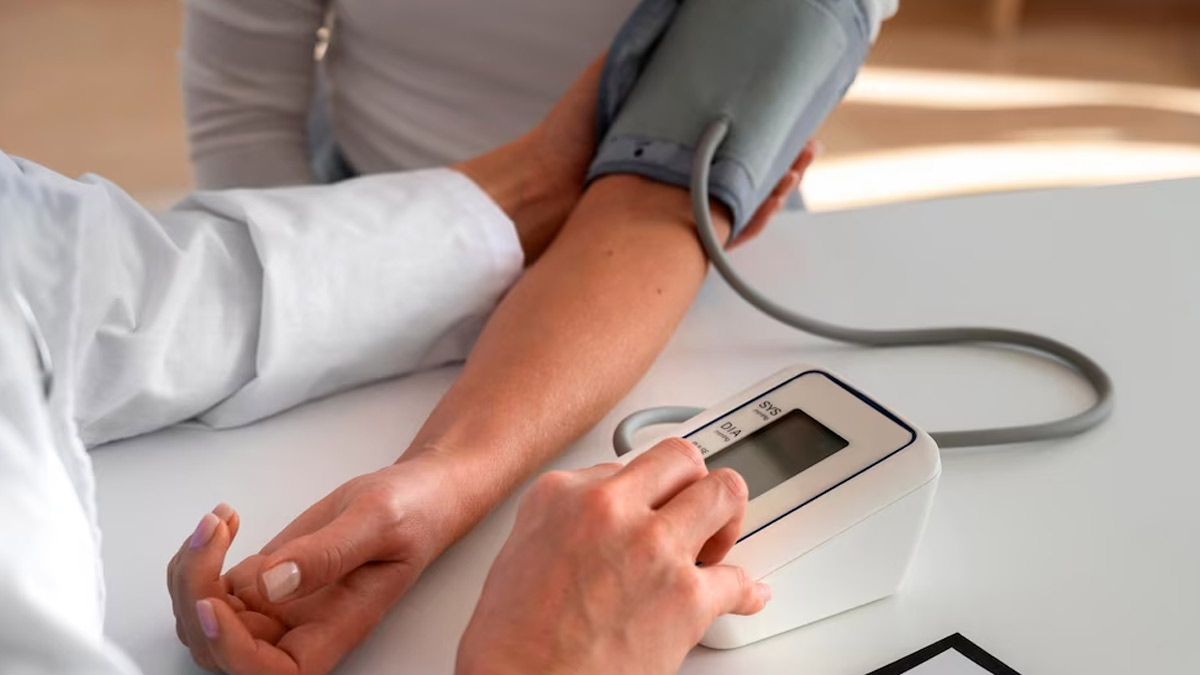
35-year-old Aditya Sharma went for a routine health check-up. Much to his surprise, he got a high blood pressure reading, making him wonder whether he is hypertensive or not. A high blood pressure or hypertension is when your blood pressure, which is the force of blood flowing through your blood vessels, is consistently too high. But does one reading determine you have hypertension? We at Only My Health spoke to Dr Gaurangi Shah, Consultant - General Medicine, P.D. Hinduja Hospital & MRC, Mahim, to get some answers.
Also Read: Signs You Have A Healthy Heart: Expert Shares Common Indicators
Does A One-Time High Blood Pressure Reading Mean Hypertension?\

According to the World Health Organization (WHO), hypertension is diagnosed if, when it is measured on two different days, the systolic blood pressure readings on both days is ≥140 mmHg and/or the diastolic blood pressure readings on both days is ≥90 mmHg.
A one-time high pressure reading therefore does not mean hypertension. “Any physical or mental stress can increase your blood pressure. So that doesn’t mean you have hypertension, every individual has high blood pressure some or other time in their lifetime. With a single event, you cannot diagnose it as hypertension,” said Dr Shah.
Understanding Your Risk Of Hypertension

According to Dr Shah, blood pressure between 130-139 systolic and 80/89 diastolic is prehypertension. “For prehypertension, we don’t give any medicine, we just monitor and advise the patient to follow lifestyle modification steps and if the BP remains persistently high above 140/90 then we intervene and advise to take medicines,” she said.
As per the US Centers for Disease Control and Prevention (CDC), factors that can increase your risk of high blood pressure include health conditions, your lifestyle, and your family history. Some of the common aspects include:
- Diabetes
- Unhealthy diet
- Physical inactivity
- Obesity
- Excess alcohol consumption
- Tobacco use
- Genetic and family history
- Age
- Sex
- Race and ethnicity
What Does A Normal BP Look Like?
A normal blood pressure level is less than 120/80 mmHg. According to Dr Shah, even 90/60 mmHg is normal in some people - sometimes thought to be low blood pressure. This is why, for every individual, the baseline BP can differ. “All individuals should keep a record of their routine BP, which should be done once a month,” the doctor emphasised.
Also Read: Study Finds Mediterranean Diet Lowers Risk Of Type 2 Diabetes: Know What Our Expert Has To Say
Ways To Reduce The Risk Of High Blood Pressure

Blood pressure risk can be minimised with simple steps. These include:
- Maintaining a healthy weight
- Eating a balanced, nutrient-rich diet
- Exercising regularly
- Reducing salt consumption
- Limiting alcohol
- Quitting smoking
- Getting sufficient sleep
Bottomline
Increased physical activity, high intake of caffeine, or stress can all lead to sudden rise in the blood pressure. This does not necessarily mean you have hypertension. The best way to know is by consulting your doctor and getting a proper screening. Do not depend on a one-time reading, rather get your blood pressure checked regularly to know for sure.







